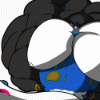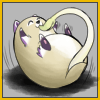
So far, this is the easiest and friendliest approach to cel shading I've developed. It monopolizes on already-defined areas, grouping, and rudimentary color adjustments to make this process as painless as possible.
Hopefully, some of you can save some time with this method. If anybody knows an easier way to go about it, please let me know.
Enjoy!
Lineart for the tutorial graciously supplied by c-trigger
c-trigger
Hopefully, some of you can save some time with this method. If anybody knows an easier way to go about it, please let me know.
Enjoy!
Lineart for the tutorial graciously supplied by
 c-trigger
c-trigger
Category All / Tutorials
Species Turtle / Tortoise
Size 800 x 4201px
File Size 898.9 kB
Listed in Folders
They can be a bit daunting to make, that's for sure!
There's still so much on this subject that I didn't address, but the idea was to teach the core principles. From here, people can figure out a lot just by guessing. I just try to keep it conversational, too, so that it reads easy. If there are any subjects you'd like me to explain, I can give them a go!
There's still so much on this subject that I didn't address, but the idea was to teach the core principles. From here, people can figure out a lot just by guessing. I just try to keep it conversational, too, so that it reads easy. If there are any subjects you'd like me to explain, I can give them a go!
I...don't fully understand the question. First, this tutorial doesn't cover highlighting, that's a completely separate subject.
If I'm guessing right, though, you're curious about the layer order, so let me explain. If you want to shade by using Approach One: Adding Shadow, then the base layer needs to be white, and you will put the shadows in by using blue. If you want to shade by using Approach Two: Adding Light, then the base layer needs to be blue, and you will then put white where the shadows aren't supposed to be.
Regardless of which layer is on top of which, the BASE layer is the one that needs to be changed to Multiply, and the grouped/top layer needs to stay set as Normal. I'm afraid I can't be any clearer than that.
If I'm guessing right, though, you're curious about the layer order, so let me explain. If you want to shade by using Approach One: Adding Shadow, then the base layer needs to be white, and you will put the shadows in by using blue. If you want to shade by using Approach Two: Adding Light, then the base layer needs to be blue, and you will then put white where the shadows aren't supposed to be.
Regardless of which layer is on top of which, the BASE layer is the one that needs to be changed to Multiply, and the grouped/top layer needs to stay set as Normal. I'm afraid I can't be any clearer than that.
I really wish I had found something like this when I first started coloring, it'd have saved me a year or two. =p
Oddly enough I stumbled across a similar method for adding light and eventually made it into the method I use these days. It's a marvelous tutorial you have here and I think I'll be telling people about it if you don't mind. =)
Oddly enough I stumbled across a similar method for adding light and eventually made it into the method I use these days. It's a marvelous tutorial you have here and I think I'll be telling people about it if you don't mind. =)
Share it all you like! I'm sorry I couldn't have helped out sooner!
What's really a shame is how hard it is to get technique help from other artists; so few people are willing to share.
I'd be happy to learn the dynamics of how you color, I'm sure there's something I could learn and pass on there.
What's really a shame is how hard it is to get technique help from other artists; so few people are willing to share.
I'd be happy to learn the dynamics of how you color, I'm sure there's something I could learn and pass on there.
Oh I'm more than willing to go over my method. I should actually have a video on my livestream channel where I'm describing it. =)
Go to http://Livestream.com/taikaguess and look for shading tutorial. But that was a while, so feel free to just show up at a stream and we can go over everything! =D
Go to http://Livestream.com/taikaguess and look for shading tutorial. But that was a while, so feel free to just show up at a stream and we can go over everything! =D
Right, you take the flat layer, put it on top of the whole colored character, change it to multiply.
If you want to perform the action of "Add shadow" the flat layer needs to be WHITE, and you use BLUE on the layer that you group on top of it.
If you want to perform the action of "Add light" the flat layer needs to be BLUE, and you used WHITE on the layer that you group on top of it.
So I may have failed to communicate the order properly.
If you want to perform the action of "Add shadow" the flat layer needs to be WHITE, and you use BLUE on the layer that you group on top of it.
If you want to perform the action of "Add light" the flat layer needs to be BLUE, and you used WHITE on the layer that you group on top of it.
So I may have failed to communicate the order properly.
Interesting approach! I'd probably duplicate the layers and merge the copies rather than mess around with merging the original color layer and coping that, but then I usually end up with all my flats in a single layer anyway due to the tools I use.
One of these days I should work more on shading; light sources and I are not exactly friends.
One of these days I should work more on shading; light sources and I are not exactly friends.

 FA+
FA+


















Comments